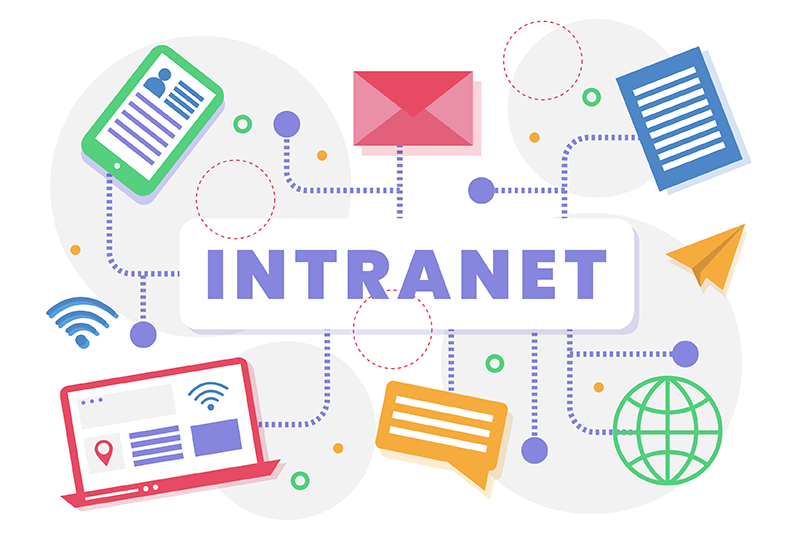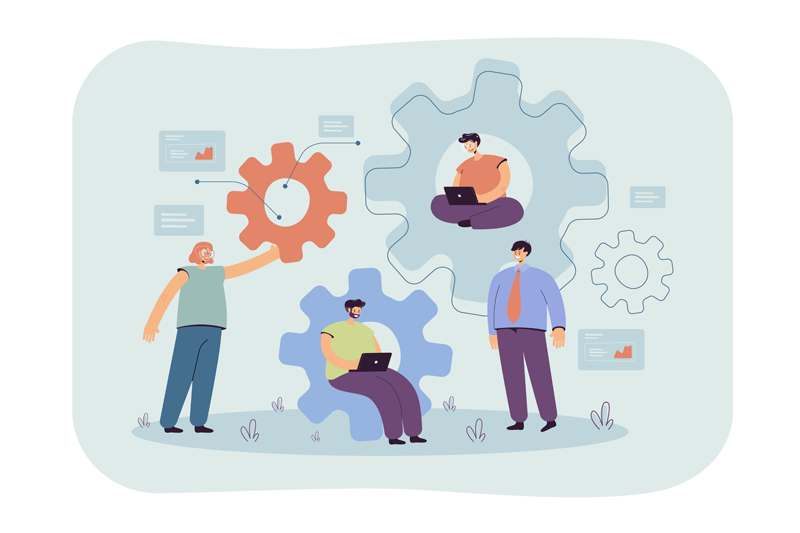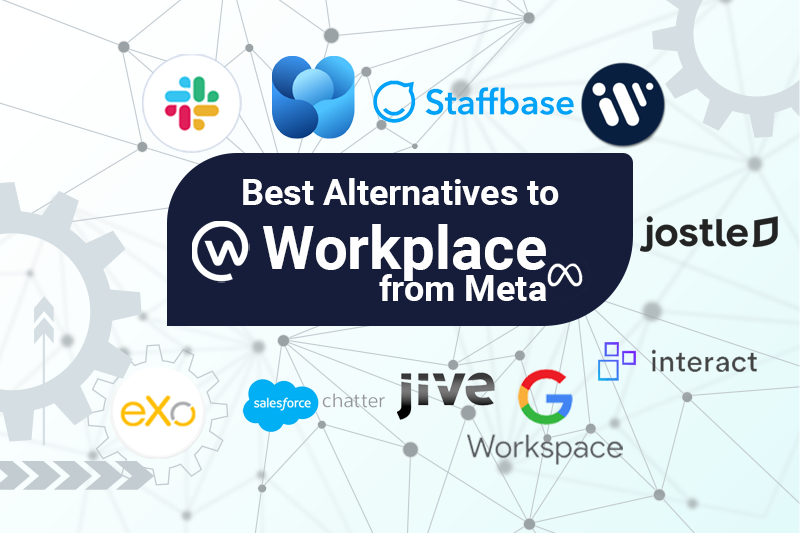- Fares Laroui
- August 27, 2020
Why APIs are an integral part of the digital workplace
“The world is at our fingertips!” This would have been a bald statement a couple of years back. But today, virtually anything we do daily is done through interconnected websites and apps. And there are plenty of them. Imagine how different your day would be if you couldn’t instantly contact your co-workers, order food or rides from your phone or pay for staff online. It’s safe to say, it would be a far cry from what you are used to.
This is because convenience, instant connectivity and easy access to information have become ingrained in our daily and working lives. However, the trick isn’t necessarily in the apps themselves but how they interact and exchange data between one another, which is the behind-the-scenes process we barely even notice.

Content
But how is that possible? And how do all the tools we use work together to make our lives easier? The answer lies in three simple letters: API.
In this blog post, we will define APIs, how they work and why they are an integral part of the digital workplace.
1. What is an API?
API – Application Programming Interface – is the bridge that connects different apps, websites, databases and smart devices following a predetermined set of rules. APIs are everywhere allowing users and developers to share, access and retrieve data, build on existing functionalities and have greater control over security. When embarking on a C++ project, having expert C++ project help can be invaluable, especially in harnessing the power of APIs as the essential bridge connecting various apps, websites, databases, and smart devices, enabling seamless data sharing, access, functionality expansion, and enhanced security control.
According to data from The Programmable Web directory, upwards of 23,000 APIs are available today, with more than 2,000 added each year since 2015. This goes to show the importance of APIs and their key role in enabling many apps and platforms to function properly and businesses to drive their digital transformation initiatives. In fact, according to the 2020 Connectivity Benchmark Report, a study of 800 IT leaders, 60% of respondents stated that integration via APIs is crucial to their digital transformation strategy.
There are four main types of APIs including public, private, partner and composite. The difference lies in availability, accessibility, type of users, protocols to follow and the way data is exchanged between software components.
In addition, we can distinguish between a variety of API protocols that define certain rules to follow for API calls. REST APIs – Representational State Transfer – and SOAP – Simple Object Access Protocol – are among the most popular APIs used by businesses to connect their internal and third-party applications and improve the overall user experience.
2. How does an API work?
APIs act as the messenger between software components. The process is straightforward; developers request access to an app’s existing code via an API call. In return, the API processes the request and sends the required information via an API response.
To have a better understanding of how APIs work, let’s take a simple example of a website login page. Generally, when we are about to sign up or login, we often have the choice between multiple options. We can use our email, Facebook, Twitter, LinkedIn etc. The way it works is quite simple. When we open the website, it automatically uses APIs such as the Facebook login API to verify whether we are already logged in by email or our social media accounts. If not, then a request is sent in order for the website to gather identification information and know who is logging in.
3. Benefits of APIs
Unleash the power of data
The number of apps and platforms used in the workplace has significantly increased in recent years. On average, organisations use upwards of 900 applications. However, only a small fraction (28%) of these apps are fully integrated. This has led to data silos with employees unable to access and retrieve critical data leading to an obvious decrease in productivity.
According to the 2020 Connectivity Benchmark Report, nine out of ten IT leaders consider data silos to be among the biggest challenges for their organisation’s digital transformation strategy, with 60% believing that APIs could be the answer to address this issue. But how?
Using APIs, organisations can connect their systems and allow their employees to capture, store and organise data with ease. Additionally, leveraging APIs can help businesses align their daily operations with strategic objectives and goals by creating tailored dashboards where users can visualise and keep track of relevant information from a variety of sources, whether internal or external. Such data include KPIs, project updates, documents or even social media feeds. This ultimately keeps employees informed and contributes to better decision making across the organisation.
Reach higher engagement rates
Providing employees with a centralised platform where they can communicate and get work done directly eliminates frustration related to data silos and lack of collaboration thus enhancing their experience and engagement levels. Additionally, an API powered platform helps HR and internal communications specialists get their message across to the entire organisation and keep employees updated on the latest activities. This can be done by connecting the platform to internal or external communications channels such as a corporate newsroom, social media feeds etc via specific APIs.
Additionally, following the rise of gamification and recognition platforms, businesses have started to embrace and embed such solutions into their digital workplace in order to engage and reward their teams. They can be fully integrated with existing systems with the use of APIs. For example, gamification points are not only attributed for actions within the gamification or recognition software but for actions performed on a variety of connected apps such as GitHub and others. Furthermore, points gained, badges, leader boards and kudos can be visible within widgets and web portlets giving users a snapshot of their rankings within the organisation.

Foster collaboration
The number of apps and platforms used in the workplace has significantly increased in recent years. On average, organisations use upwards of 900 applications ranging from CRMs, ERPs, DMSs, intranets and more. However, only a small fraction (28%) of these apps are fully integrated. This has led to a decrease in productivity as employees spend more time looking for information than working on productive tasks.
APIs are all about connectivity. They represent the glue that connects different apps, devices and, more importantly, people. Take the example of two teams working on the same project but using different tools. By leveraging APIs, they can create a common working area where they can share project updates, consult and extract data and collaborate in real time without having to switch between apps.
Extend your digital ecosystem
As APIs continue to grow in popularity, many enterprise software solutions such as eXo Platform provide APIs for developers. The aim is to allow businesses to integrate existing systems, customise and extend their solutions to match their specific needs instead of building apps themselves.
Mitigate security threats
It comes as no surprise that using all sorts of apps and exchanging data might pose a security threat. APIs act as an added security layer that gives businesses greater control over their data and internal systems. However, it’s worth noting that implementing APIs can have its own threats. This is why APIs should be carefully and securely implemented.
eXo Platform 6 Free Datasheet
Download the eXo Platform 6 Datasheet and
discover all the features and benefits
discover all the features and benefits
- Tags: Digital workplace, Industry trends
5/5 - (2 votes)
I am a product marketing specialist at eXo. My role is to assist marketing and sales teams in their operations and present our digital workplace solution to the world. I mainly blog about the latest tech trends, digital transformation, internal communication and how to navigate through eXo Platform.
Related posts
- All
- eXo
- Digital workplace
- Employee engagement
- Open source
- Future of work
- Internal communication
- Collaboration
- News
- intranet
- workplace
- Knowledge management
- Employee experience
- Employee productivity
- onboarding
- Employee recognition
- Change management
- Cartoon
- Digital transformation
- Infographic
- Remote work
- Industry trends
- Product News
- Thought leadership
- Tips & Tricks
- Tutorial
- Uncategorized
Leave a Reply
( Your e-mail address will not be published)
Connexion
0 Comments
Commentaires en ligne
Afficher tous les commentaires


